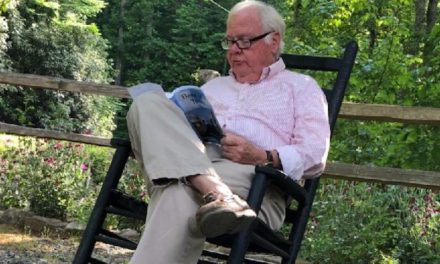 I’ve been meaning to write this column for a long time. Last week, two events converged in my life, and I could no longer put it off.
I’ve been meaning to write this column for a long time. Last week, two events converged in my life, and I could no longer put it off.
Event #1 – My family and I took a trip to New York City. It was not my first trip to New York City, or even my second, but it had been a long, long time – nigh on a decade. I was due up.
Event #2 – Upon our return, I found an email in my inbox from a total stranger who’d written to tell me something I already knew – that Lowcountry Weekly isn’t actually an “alternative” paper as our cover claims.
“Usually, ‘alternative’ means counterculture – not just a little more to the middle politically than the local paper,” wrote this mysterious stranger named Joe. “There was a lot of stuff about pets in the latest issue,” he continued, referring to our opinion columns, which, he informed me, are not very edgy. “Pets are suburban, not ‘alternative,’” he quipped.
(Clever, though not entirely accurate in my experience. Most of my hipster friends have pets; it’s children they tend not to have.)
Joe advised me to check out the Dallas Observer. “Now that’s alternative,” he wrote. Joe recently relocated from the major metropolitan area whence that paper hails to the “Slow Country,” as he calls our fair region. I imagine our paper’s not the only thing coming up short on his alterna-meter lately.
Amidst this smattering of criticism, Joe was kind enough to acknowledge that we do have a lot of good arts coverage in Lowcountry Weekly. He sounded almost surprised. Imagine, good arts coverage in a publication that’s not alternative. It simply isn’t done.
Okay, I’m being facetious at Joe’s expense. My apologies. The truth is, he’s right on both counts. Lowcountry Weekly is not alternative in the contemporary sense of the word, and we do have good arts coverage. In fact, it’s been our primary mission since conception, almost a decade ago, to celebrate and promote the local arts community. You’ve probably noted that our paper is made up mainly of two parts – arts features and commentary. As we see it, publishing the essays of local writers is just one more way we support our creative community here in the Lowcountry. We don’t require that our writers be edgy; just interesting. I guess, for some, the two can’t be separated.
The question is – and it’s one of been thinking about for a while – must an arts publication be “alternative” to be legit? Must it be aimed only at those who count themselves members of the “counterculture”? Are radicals and subversives the only people who care about the arts? Must art, itself, be countercultural to be… art?
I found myself musing on these questions last week in New York. On our first full day there, we took a cruise around New York Harbor, which afforded us wonderful sightings of almost every reason one travels to the Big Apple. As the Statue of Liberty came into view, I was unexpectedly overcome. It wasn’t just her grand scale or serene beauty that had me suddenly fighting back tears – it was her meaning, all that she represents. I thought of all the immigrants for whom she’d lit the way to a better life – the tired, the poor, the huddled masses yearning to breathe free. I felt renewed pride in our magnificent country, but also anguish that the “golden door” is not as welcoming as it once was. In short, I was awash in awe, gratitude, humility and a deep sense of man’s humanity – and inhumanity – to man. It hit me fast and hard and I’m still thinking about it today. Isn’t that what art’s supposed to do? We’ve seen Lady Liberty on so many buttons and tee-shirts and kitschy tourist toys, it’s easy to forget that two accomplished French designers lovingly and skillfully created her over a century ago as a tribute and gift of friendship to our country. Neither elitist nor countercultural, Lady Liberty is art for the masses; she celebrates everything America stands for. Does this make her artistically inferior?
The next day found us roaming the Metropolitan Museum. In this mammoth repository of art history, where one could spend weeks without seeing everything, we started with ancient Greek sculpture before working our way into the Medieval Room. What struck me most was the uplifting grandeur of it all – the towering pagan gods and goddesses carved from gleaming marble and stone; the Christian saints with their ethereal expressions. Next we moved to the featured exhibit – a collection of works by the Dutch Masters. We’re talking Rembrandt, Vermeer, and the gang, who were painting during the 17th century. We saw everything from huge, striking portraits of aristocrats, to small, luminous scenes of domestic life. The Dutch Masters, like other “masters” before them (and unlike the moderns who came later), had little compulsion to deconstruct the prevailing culture or the forms by which they studied it. Instead, their paintings reflect an urge to penetrate that culture, plumbing it for its essential truth and transcendent beauty; they saw, in the material world, reflections of the spiritual realm, and their work embodies that vision. It is accessible and easy to love, but no one would call it banal or merely decorative. Certainly, no one would challenge its status as “real” art.
That night, I was thrilled to introduce my husband and daughter to my very favorite debatable art form – the Broadway Musical. We saw the Tony Award winning “Wicked,” which chronicles the untold story of the witches of Oz. Since my husband and I both dabble in acting, we know lots of “theatre people,” and many of them are strangely snobbish when it comes to musicals. I’ve never been able to figure out why some folks don’t take the musical seriously as an art form, but while watching “Wicked,” it suddenly dawned on me. Musicals are just too much fun, just too darn entertaining, to be art. Or so the thinking must go. Well, I’m here to challenge that notion. Yes, “Wicked” was outrageously entertaining. But it wasn’t just entertaining. It was dazzling to look at, musically inspired, hilariously witty, and devastatingly poignant. It even had a moral – things aren’t always as they seem, the powerful are often corrupt, history is written by the victors – that any self-respecting counterculturalist could embrace. In short, “Wicked” provoked just the sort of mental and emotional catharsis that art’s supposed to provoke, and the fact that this healing, energizing experience was available to everybody in the audience – just your basic tourists, and plenty of them suburbanites – didn’t make it any less profound.
Speaking of profound… one morning, after our second go-round at ToysRUs, we were pushing and shoving our way down 5th Avenue when we found ourselves standing before the soaring splendor of St. Patrick’s Cathedral. We followed a group in through the side door, and were suddenly caught up in what must have been the conclusion of High Mass. (We’d forgotten it was Sunday morning.) The priest was carrying an ornate gold cross up the aisle, glorious strains of Bach were piping through the rafters, radiant light poured through elaborate stained glass windows, and all around us people were praying. Having just come in off the rollicking, rude streets of New York, it was culture shock in the most literal sense. Overwhelming and humbling and simply soul-shattering. I can’t imagine there’s a single New Yorker who worships there regularly who isn’t awestruck every time he enters the church. With its towering, neo-Gothic spires, its famous “rose window,” its lovely pieta and all the rest, St. Patrick’s is a breathtaking work of art for the ages, but it is hardly countercultural. (Though, as America becomes ever more secular, I suppose it will be eventually.)
St. Patrick’s was built in the mid 19th century. Could it be built today? Artistically speaking, the modern era has been about looking in, not looking out… and certainly not looking up. Far from glorifying God, the Moderns have sought to deny his existence, usurp his position, or at best, take him down a few notches. In their quest to deconstruct our myths and belief systems, Modernists – painters, musicians, writers, e. al. – have deconstructed form, subject, and even technique. The results are often challenging and provocative. In my opinion, they are less often inspiring or cathartic.
But, of course, that’s just my opinion. And remember, I am neither alternative nor edgy. I am discerning, though. I’d never make the populist claim that everything is art. I do, however, believe that art is for everybody.
Even small town, whitebread, suburban moms like me.







